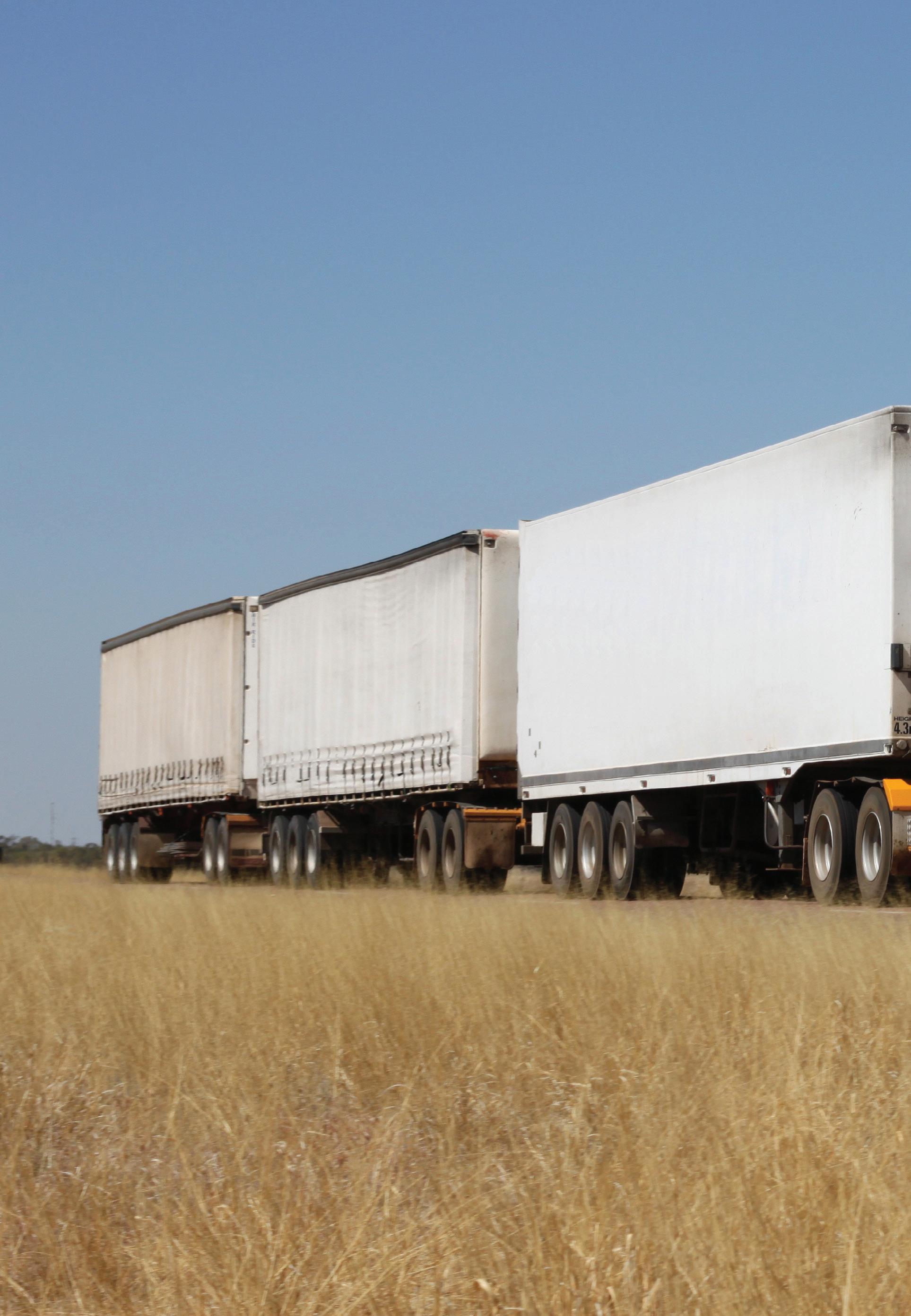
10 minute read
Road-friendly air suspension — preventive maintenance checklist
ROAD-FRIENDLY AIR SUSPENSION
PREVENTIVE MAINTENANCE CHECKLIST
Russell Chown, Manager for Automotive Air Springs, Air Springs Supply
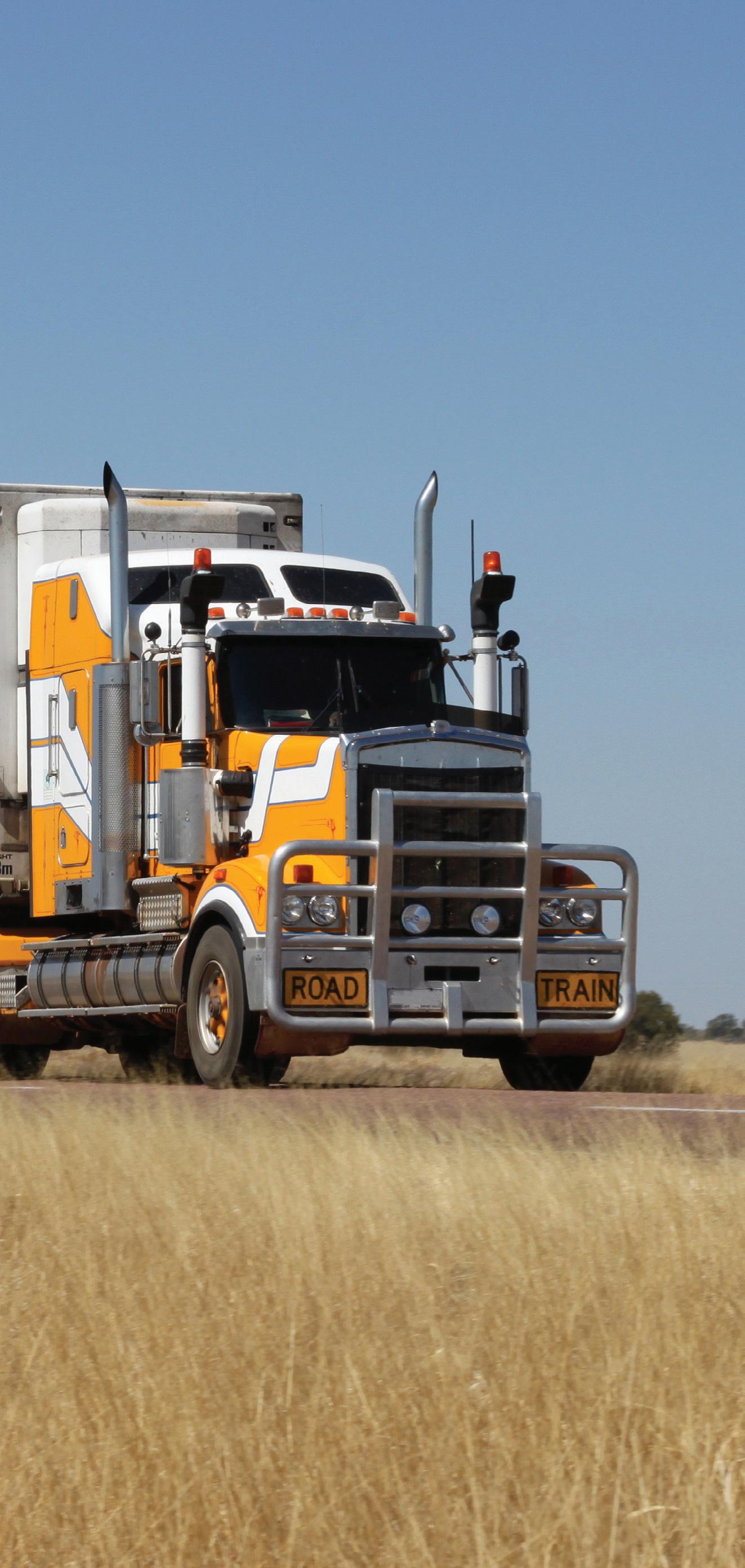
The airbag revolution rolls on with this nine-point preventive maintenance checklist for heavy vehicles — designed to keep roadfriendly air suspension working safer for longer across Australia’s road transport network.
©stock.adobe.com/au/On-Air As the Australian heavy vehicle fleet nudges half a million trucks for the first time on record, a huge emphasis is being placed on their safety as road users and as a vital link in the nation’s response to COVID-19 supply issues. Our heavy vehicle fleet now stands at about 365,000 rigid trucks over 4.5 tons, according to the 2021 ABS Motor Vehicle census, with another 109,927 articulated heavy vehicles (also a record number) doing the heavy haulage over Australia’s diverse and demanding network of more than 870,000 km of public roads. These vital vehicles, with an average age of about 15 years, share the roads with about 20 million cars and other vehicles of different types. Most of the heavy trucks — certainly most of those over 12 tons — rely on road-friendly air suspension systems that increase the ability of trucks, trailers and coaches to transport loads by levelling the suspension, enhancing stability, control and safety.
Use of these tough but comfortable systems — which also reduce noise and vibration — has grown exponentially over a generation in Australia, to the point where they have gone from being a comparative rarity to becoming an industry standard as drivers and fleet owners seek top performance on both sealed and tough unsealed roads (the latter of which still comprise more than half the total of the roads in this sprawling country). Air suspension systems now abound in the federal government’s lists of Certified Road-Friendly Suspensions prepared by the Department of Infrastructure, Transport, Regional Development and Communications. Suspensions on the list encompass the major original equipment manufacturers (OEM) and specialist brands of worldwide manufacturers, including in Australia.
©stock.adobe.com/au/Arafat Uddin PREVENTIVE MAINTENANCE CHECKLIST
1. Inspect the outside diameter (OD) of the air spring. Check for signs of irregular wear or heat cracking.
2. Inspect air lines to make sure contact doesn’t exist between the air line and the OD of the air spring. Air lines can rub a hole in an air spring very quickly.
3. Check to see that there is sufficient clearance around the complete circumference of the air spring while at its maximum diameter.
4. Inspect the OD of the piston for build-up of foreign materials. (On a reversible sleeve style air spring, the piston is the bottom component of the air spring.)
5. Correct ride height should be maintained. All vehicles with air springs have a specified ride height established by the OEM. This height, which is found in your service manual, should be maintained within ¼″ (6.3 mm). This dimension can be checked with the vehicle loaded or empty.
6. Levelling valves (or height control valves) play a large part in ensuring that the total air spring system works as required. Clean, inspect and replace, if necessary.
7. Make sure you have the proper shock absorbers and check for leaking hydraulic oil and worn or broken end connectors. If a broken shock is found, replace it immediately.
The shock absorber will normally limit the rebound of an air spring and keep it from overextending.
8. Check the tightness of all mounting hardware (nuts and bolts). If loose, re-torque to the manufacturer’s specifications. Do not over-tighten.
9. Use the right cleaning media because use of incorrect media can cause damage and void warranties. In the case of Firestone, for example, approved cleaning media are soap and water, methyl alcohol, ethyl alcohol and isopropyl alcohol. Non-approved cleaning media include all organic solvents, open flames, abrasives and direct pressurised steam cleaning.
Users who find a fault exists using the checklist should take corrective action to ensure that it is fixed properly — it will save you both time and money and ensure ongoing safety.
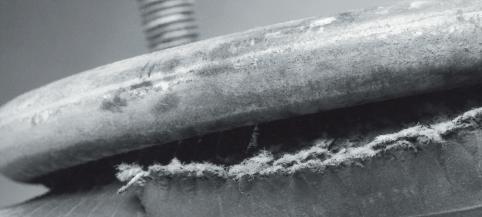
Circumferential cuts, above, can be caused by being fully extended for long periods or impact in the compressed position. Loose girdle hoops, below, can be caused by running at extended positions with low air pressure.
Concave bead plate, above, or overextended air spring, below, can be caused by factors such as broken or defective shock absorbers, defective levelling vale, overloaded vehicle, pressure regulator set to low or use of an incorrect air spring that is too tall. Damage from over-extension can also be caused by defective upper stops or an air spring that is too short.
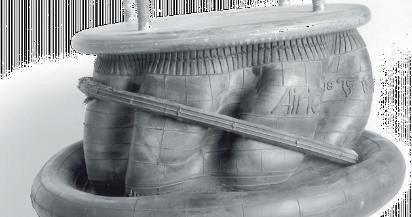

USE OF THESE TOUGH BUT COMFORTABLE SYSTEMS — WHICH ALSO REDUCE
NOISE AND VIBRATION — HAS GROWN EXPONENTIALLY OVER A GENERATION
IN AUSTRALIA, TO THE POINT WHERE THEY HAVE GONE FROM BEING A COMPARATIVE RARITY TO BECOMING AN INDUSTRY STANDARD AS DRIVERS
AND FLEET OWNERS SEEK TOP PERFORMANCE ON BOTH SEALED AND TOUGH
UNSEALED ROADS (THE LATTER OF WHICH STILL COMPRISE MORE THAN HALF
THE TOTAL OF THE ROADS IN THIS SPRAWLING COUNTRY).
Use of air suspension is a far cry from even 30 years ago, when they were more of a rarity than the norm, which comprised massive, bone-jarring, steel springs. They were certainly tough, these steel springs, but they were hard too on roads, cargoes and drivers. Air suspension was a quiet revolution (literally) that brought massive relief to a whole generation of drivers who appreciated the benefits of the technology through the seat of their pants, because air suspensions were far smoother compared with the harsher, clumsy systems that were commonplace on heavy vehicles at that time. After all, air suspensions are the ride of choice for many of the top models of the world’s prestige makers of limousines, so our truckies are in good company as they suffer less fatigue through road shock.
And the industry (and the regulators) quickly woke up to the fact that these suspensions could be kinder to the roads, as well as to them — while delivering heavyweight reliability where they are properly maintained. Good basic maintenance is the key for these almighty tough air springs to last for hundreds of thousands of kilometres — in well-maintained cases, out past 600,000 km, in our experience. Today, demand for air springs utilised in air suspensions for all types of heavy vehicles (including a vigorously growing market for 4WDs and recreational vehicles) has grown in line with a world market that is now estimated by market researchers to exceed AU$6 billion. These markets are major users of the ubiquitous Airride, Airstroke and Airmount Firestone air springs and ContiTech air springs for coaches, prime movers and trailers.
The tremendous distance travelled and safety achieved by quality OEM and replacement air springs such as Firestone and ContiTech can be extended further with a preventive maintenance checklist (below) that takes just a matter of minutes and will save both downtime and money across major users of heavy vehicles, ranging from transport and logistics fleets through to mining, construction and individual users of articulated, rigid and on-road and offroad vehicles using air suspensions. The following simple checks will pay dividends (noting that users should never attempt to actually service the air suspension on a truck or trailer with the air springs inflated). Now more than ever it is important for safety and cost-efficiency to maintain the suspension of Australia’s hard-worked heavy vehicle fleet, the average age of which is twice the average of leading European nations and three times the average of China and California, according to trucking industry figures. So not only are Australian heavy vehicles working longer, particularly during the COVID-19 pandemic, they typically cover greater distances to keep up with constantly changing supply chains to deliver a greater range of urgently needed goods to far-flung urban and rural centres. Clearly safety and reliability are paramount for this vital job. As always, a little preventive maintenance will save a lot of trouble for truckies and fleets.
Air Springs Supply Pty Ltd www.airsprings.com.au
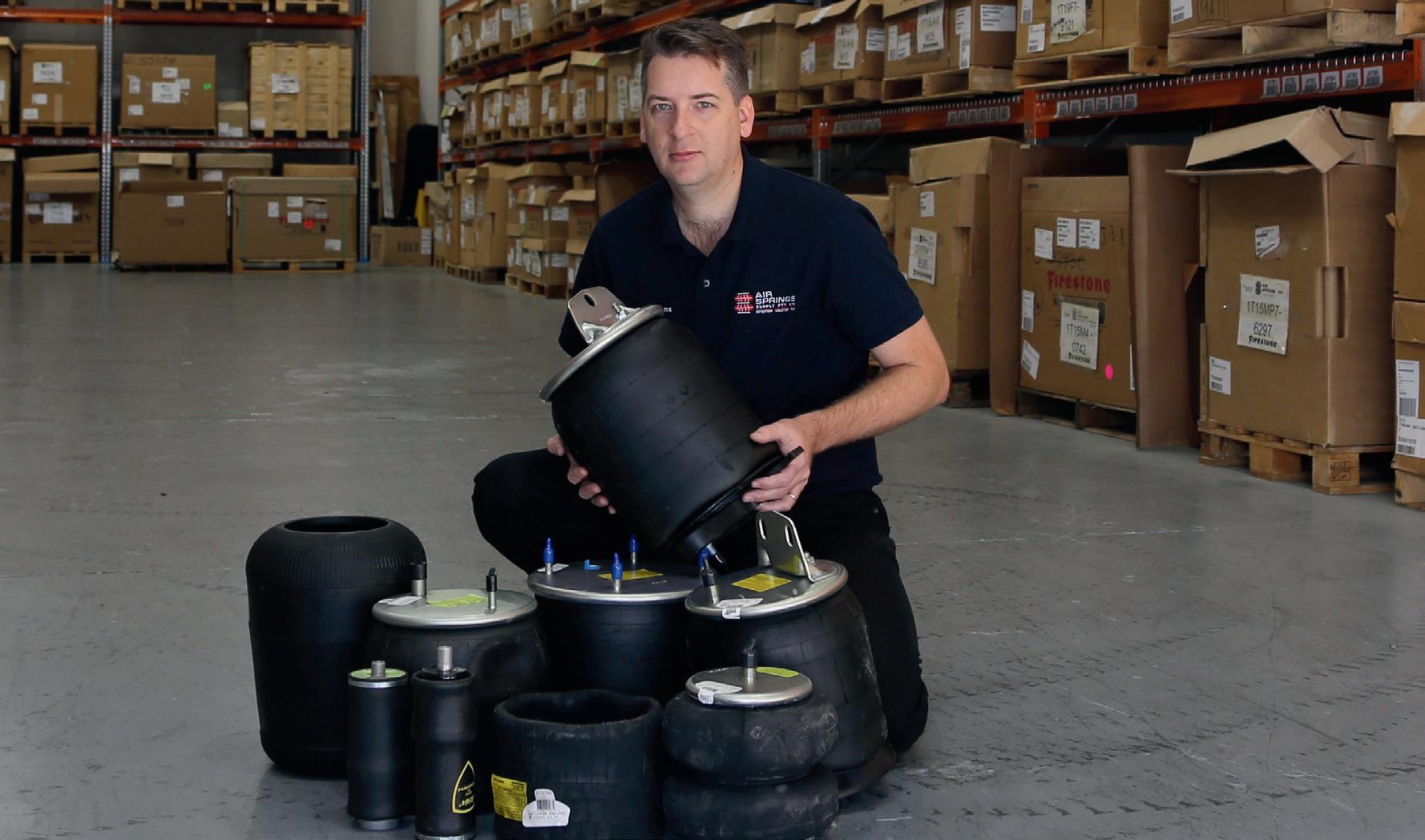
Russell Chown of Air Springs Supply Pty Ltd, national distributor of Firestone Industrial Products.
Cling film pallet wrapper
The Pack King Rapid Wrapper helps people working in warehouses avoid the strain of pulling stretch film, when trying to protect a pallet load of goods with protective film. Users can place the load into the 280 mm-high turntable, press the foot pedal to start rotation, then stand in one spot while holding the stretch film dispenser, tensioning the film using the hand brake.
The Rapid Wrapper can be moved with a hand pallet truck. It can also be loaded using either a straddle walkie stacker or forklift. When not required, it can be stowed safely on pallet racking, due to the notches in the base frame.
The low-voltage foot control unplugs, as does the extension cord, so there are no trailing wires to worry about. To use the Rapid Wrapper, plug it into any 240 V outlet and the 1220 mm-diameter chequer plate powered turntable is ready to go.
Pack King
www.packking.com.au
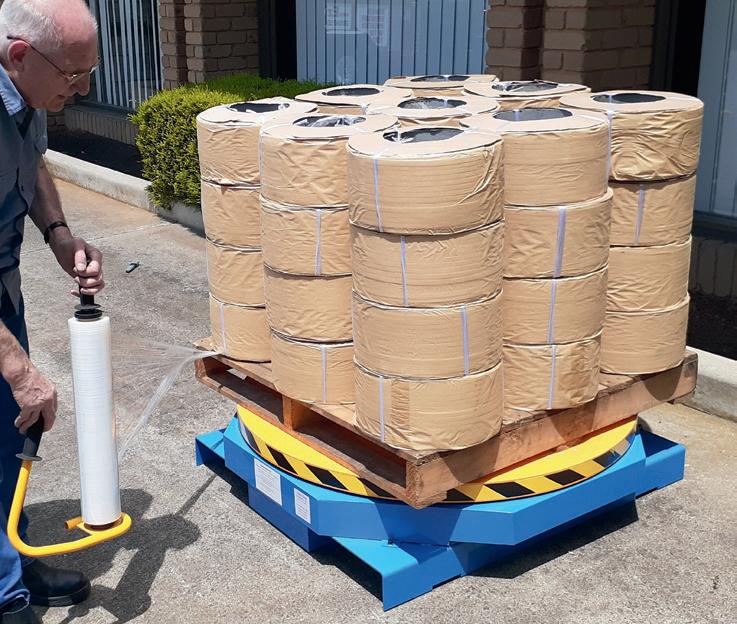
Antimicrobial coating technology
Developed by Australian materials technology company Xefco in response to the COVID-19 pandemic, MetalliX is a patent-pending technology that applies a trace amount of 99.95% pure copper as an ultrathin surface coating on the fibres of textiles. MetalliX technology harnesses the unique antimicrobial properties of copper, utilising a high-tech vapour deposition process to create breathable materials that destroy harmful enveloped viruses (such as SARS-COV-2) and bacteria.
MetalliX uses Xefco’s coating technology to produce ultra-thin copper surfaces on textiles that does not change the hand feel, breathability or weight of the fabric. The ultra-thin copper surface coating provides rapid antiviral and antibacterial activity, inhibiting the persistence of pathogens on treated textiles.
Studies conducted by the Peter Doherty Institute for Infection and Immunity have shown materials treated with MetalliX technology can inactivate SARS-COV-2, the virus that has caused the COVID-19 pandemic, by 97.79% within five minutes and 99.95% within 15 minutes, with no infectious virus detectable on the textiles after 30 minutes. MetalliX can be applied to a range of textiles and substrates. The coating process allows the treatment of hydrophobic spunbonded and melt blown materials used in PPE face masks and air filters which cannot be treated via conventional textile finishing methods.
Xefco Pty Ltd
www.xefco.com

Manual handling risk assessment software
Soter Analytics has developed an AI-driven visual processing product that acts as an ‘impartial observer’ when performing task risk assessments. The technology, called SoterTask, provides a ‘second unbiased eye’ and labour-saving features that decrease the workload of safety professionals and increase the safety of their workers. SoterTask is designed to streamline and speed up ergonomic assessments, providing easy-to-read reports with objective data to assist observational techniques and increase the safety of workers.
Performing risk assessments on individual tasks in the workplace is part of the hazard identification process, to keep workers safe. Typically, assessments are carried out by safety professionals and can be subjective, with long ergo reporting requirements. Soter Analytics has found a solution to this; using AI vision processing software, the solution helps professionals carry out these evaluations.
SoterTask is simple to use. Needing only a smart device, the application can be applied on the go and requires no special tools or sensors. The video software provides a visual overlay highlighting high-risk angles and movements of a worker’s body including legs, arms, neck and back on a second-by-second chart. The impartial eye assists with any perceptual or inattentional blindness and confirmation bias, both of which involve factors that influence standard observational techniques.
The visually pleasing interface and accompanying dashboard provide detailed analysis of risks and integrate all industry ergo tools, displaying side-by-side risk comparisons for pre- and post-intervention implementations. The labour-saving tool also presents reports with key improvement metrics for distribution and follow-up.
Soter Analytics
www.soteranalytics.com









